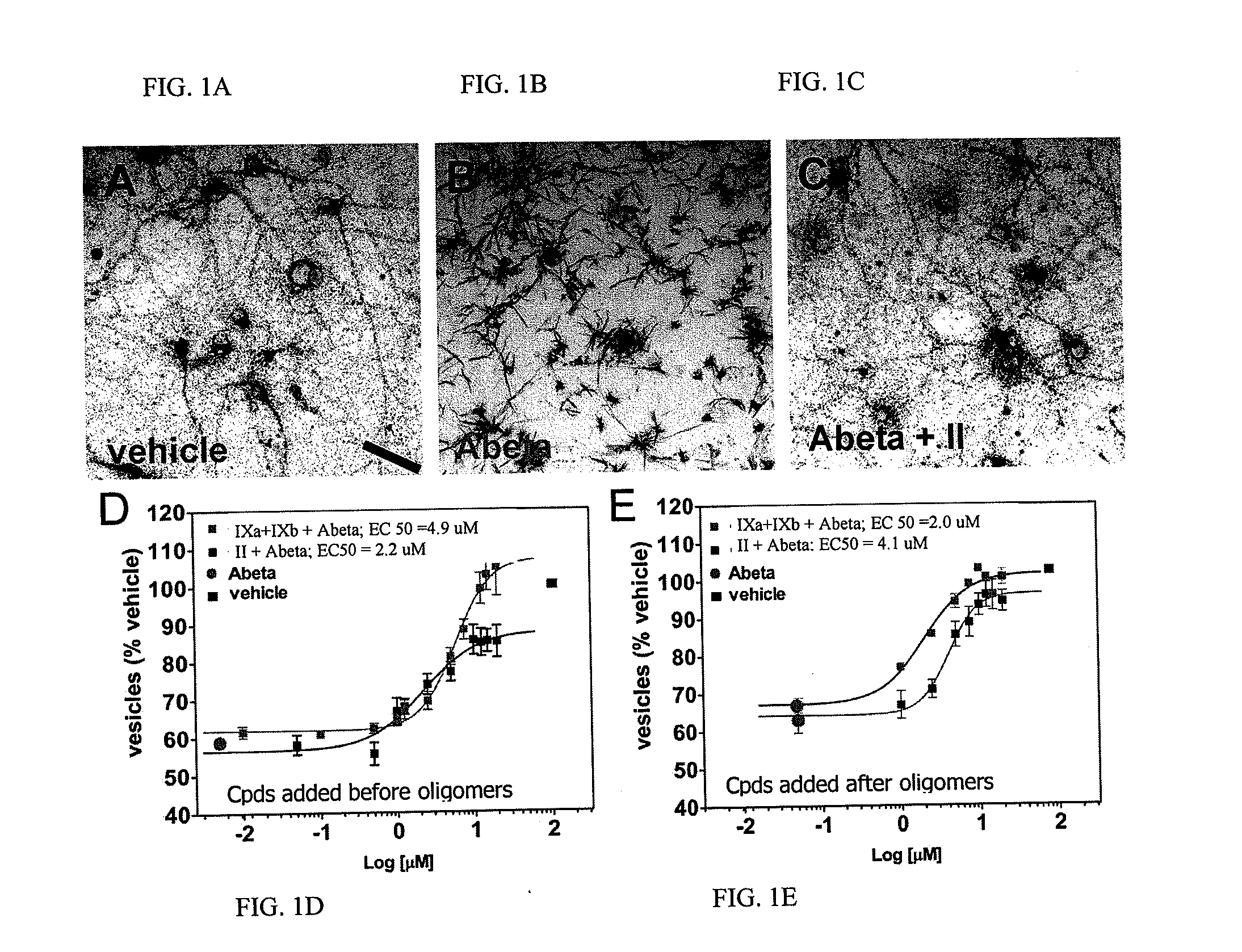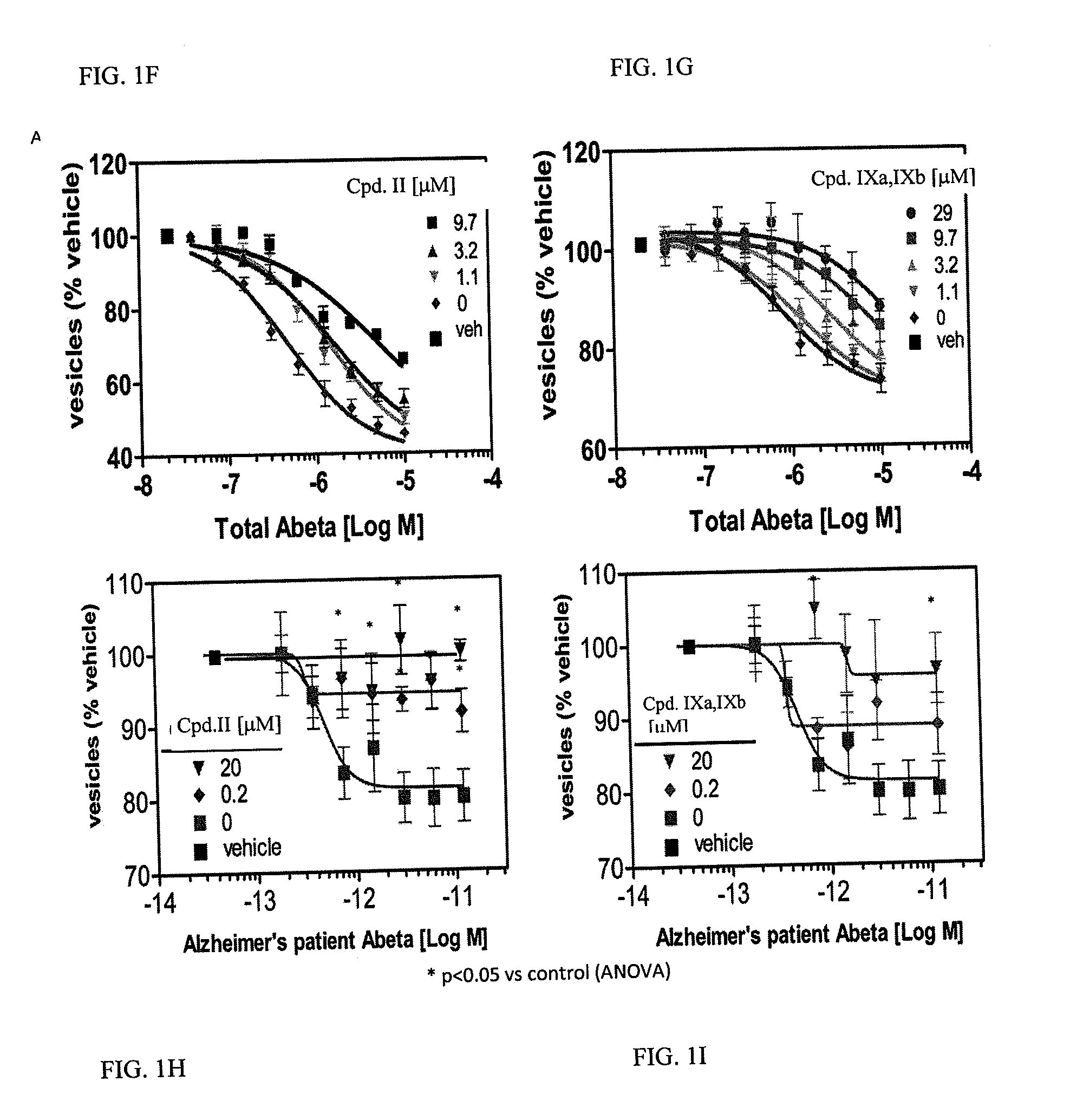Compositions and methods for treating neurodegenerative disease
- Summary
- Abstract
- Description
- Claims
- Application Information
AI Technical Summary
Benefits of technology
Problems solved by technology
Method used
Image
Examples
working and synthesis examples
[0616]Examples 1 and 2 describe Abeta oligomer preparations that could be used for experiments such as those described herein. The particular preparations used in the membrane trafficking and oligomer bindin / synapse reduction assays as well as those used in the in vivo assays described below are each described in the example to which they pertain.
example 1
Preparation of Amyloid Oligomers
[0617]The conditions in which amyloid β may oligomerize in nervous tissue, a milieu of aqueous-soluble proteins with which it may associate, were re-created to identify the more disease-relevant structural state of amyloid β oligomers and fibrils. Aqueous soluble proteins were prepared from rat brain by ultracentrifugation. Specifically, 5 volumes of TBS buffer (20 mM Tris-HCL, pH 7.5, 34 mM NaCl and a complete protease inhibitor cocktail (Santa Cruz) per gram of brain tissue was added to the rat brain tissue on ice. Dounce homogenization was then carried out with a tight-fitting pestle. The homogenized brain tissues were then centrifuged at 150,000×g for 1 hour at 4° C. (40,000 rpm Ty65). The infranatant (between floating myelin and a half cm above the pellet) was then removed and aliquots were frozen at −75° C. The pellets were then resuspended in TBS to the original volume and frozen in aliquots at −75° C. Synthetic, monomeric human amyloid β 1-42 ...
example 2
Preparation of beta-amyloid oligomers
[0619]A solution of 1.5 uM monomeric human amyloid β 1-42 in a mixture of rat brain soluble proteins was incubated for 24 hours at 4° C. as described in Example 1. This solution was then treated with tri-fluoro ethanol (TFE) prior to taking the spectra. In TFE, assembled protein structures and non-covalently bound protein complexes dissociate into denatured proteins, and the peaks associated with assembled oligomers are expected to disappear. The majority of protein peaks observed in Example 1 disappeared including the 9822 Da, 14,731 Da, 31,950 Da, and 49,291 Da peaks identified above. However, an abundant peak is observed at 4518 Da which represents amyloid β monomer peak. A peak at 4954.7 is apparent which may represent a longer abeta fragment similar to amyloid β 1-46. An additional peak is observed at 7086 Da which was not present in the preparation described in Example 1, which may represent amyloid β monomers associated with a 2550 Da cova...
PUM
| Property | Measurement | Unit |
|---|---|---|
| Molar density | aaaaa | aaaaa |
| Molar density | aaaaa | aaaaa |
Abstract
Description
Claims
Application Information
 Login to View More
Login to View More - R&D
- Intellectual Property
- Life Sciences
- Materials
- Tech Scout
- Unparalleled Data Quality
- Higher Quality Content
- 60% Fewer Hallucinations
Browse by: Latest US Patents, China's latest patents, Technical Efficacy Thesaurus, Application Domain, Technology Topic, Popular Technical Reports.
© 2025 PatSnap. All rights reserved.Legal|Privacy policy|Modern Slavery Act Transparency Statement|Sitemap|About US| Contact US: help@patsnap.com



